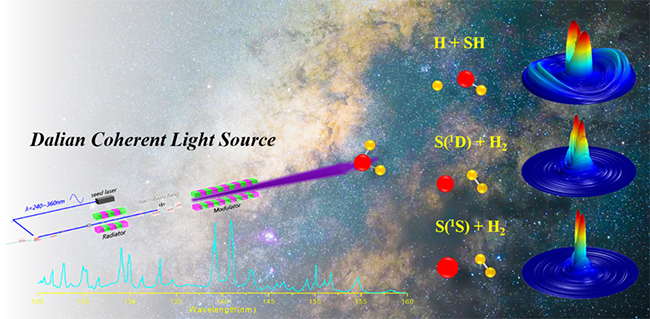Hydrogen sulfide (H2S) is one of the most important molecules in solar nebula, the local S atom and SH radical abundances in the interstellar medium are strongly linked with the photodissociation of H2S by solar vacuum ultraviolet (VUV) photons.
Recently, a research group led by Prof. YUAN Kaijun from the Dalian Institute of Chemical Physics (DICP) of the Chinese Academy of Science (CAS), in collaboration with Prof. Mike Ashfold from the University of Bristol and Prof. HU Xixi from Nanjing University, revealed the vibronic state dependent predissociation of H2S molecules.
"We have provided a detailed and complete picture of the photofragmentation behavior of H2S molecules, these results may be incorporated in future astrochemical modelling," said Prof. YUAN.
This study was published in Chemical Science on Feb.14 and was selected as the cover article.

The vibronic state dependent predissociation of H2S: determination of all fragmentation processes (Image by ZHAO Yarui and YUAN Kaijun)
The researchers presented a comprehensive study of the photochemistry of H2S, derived from cutting-edge translational spectroscopy measurements of H, S(1D) and S(1S) atom products formed by photolysis at wavelengths across range 120–155 nm. The results provided detailed insights into energy disposal in co-fragments, and the atomization routes leading to three-body products.
With theoretical calculations, they found that the dynamics of all fragmentation processes, especially the bimodal internal energy distributions in the diatomic products, could be rationalized in terms of non-adiabatic transitions between various potential energy surfaces.
The above work was supported by the National Natural Science Foundation of China, the Key Technology Team of CAS, and the Liaoning Revitalization Talents Program.